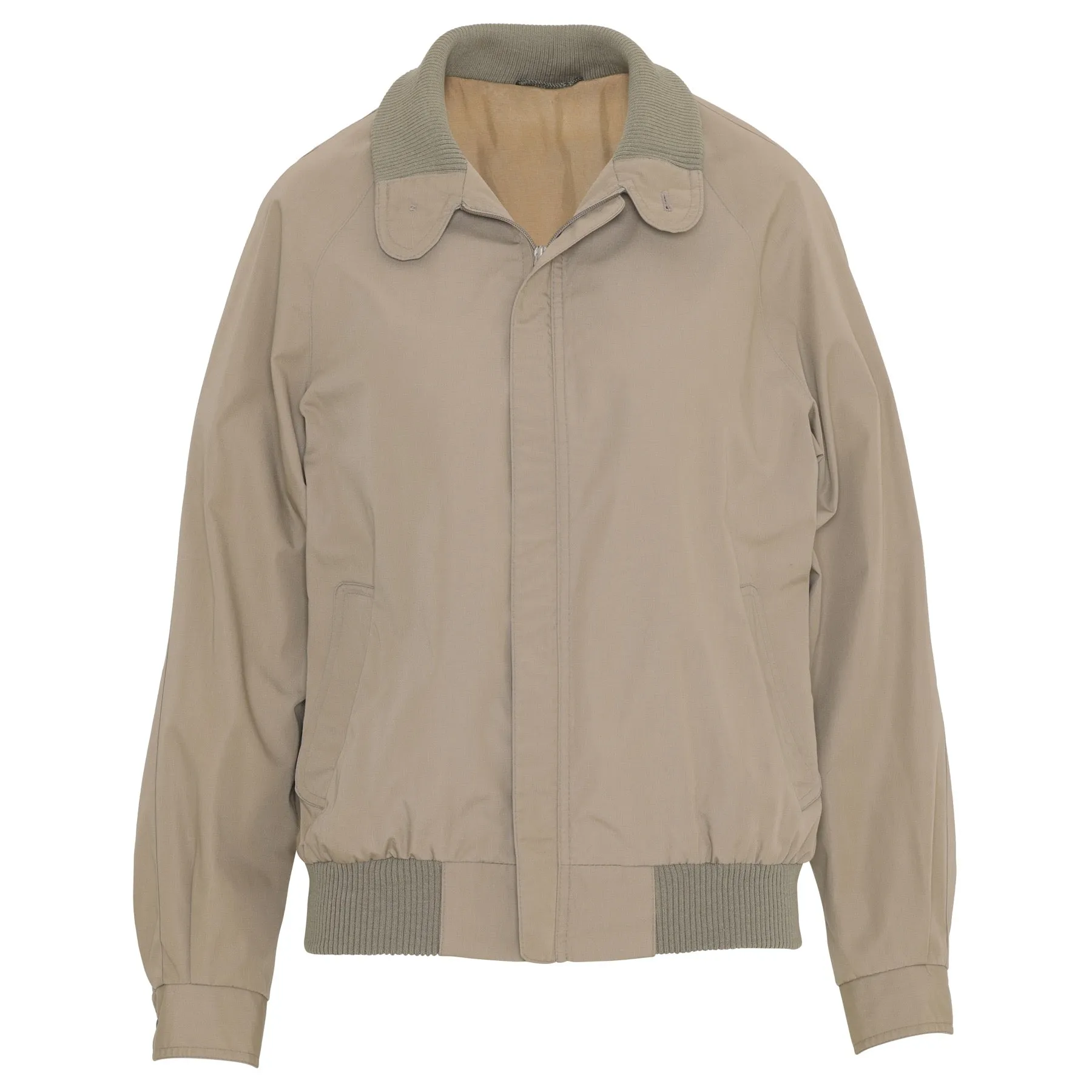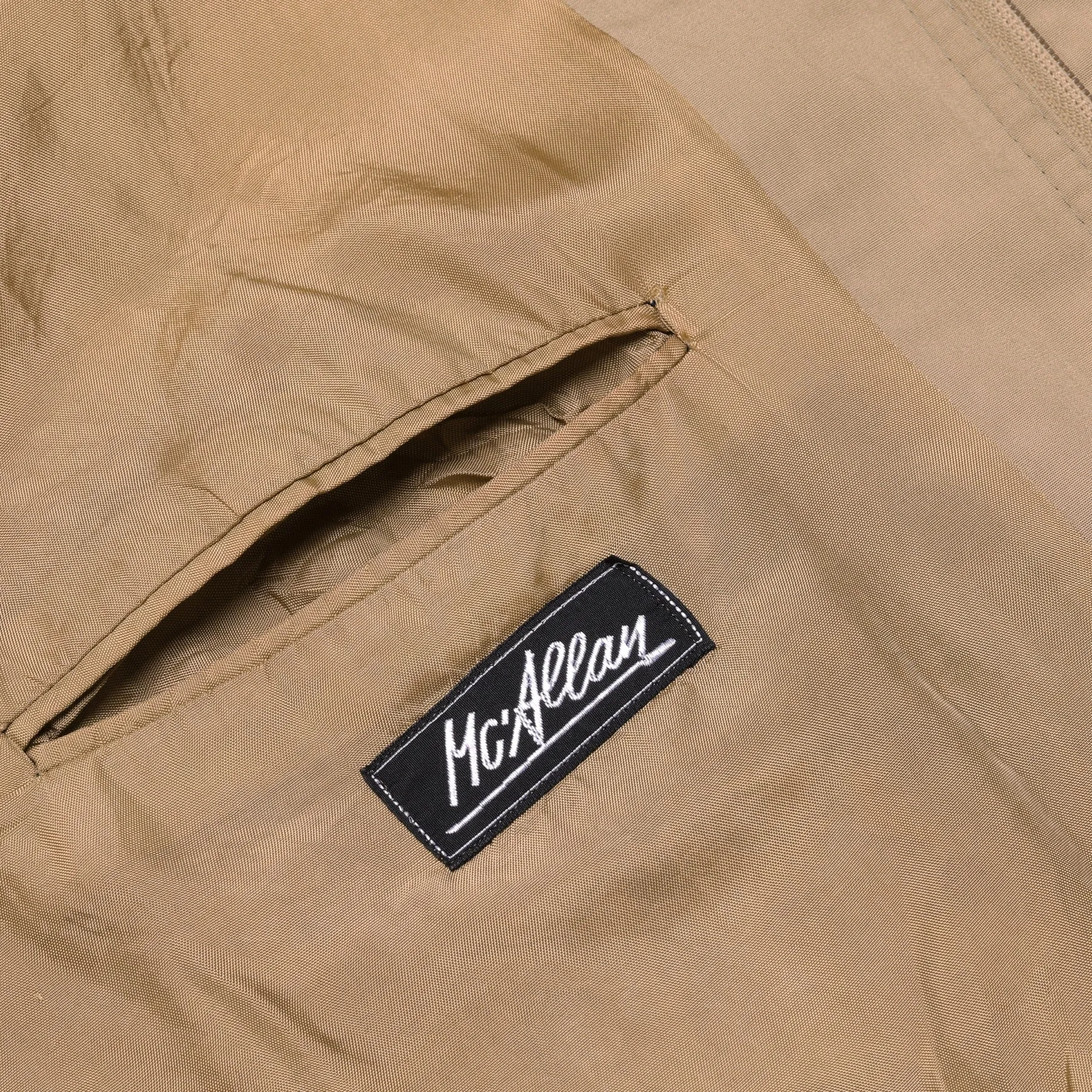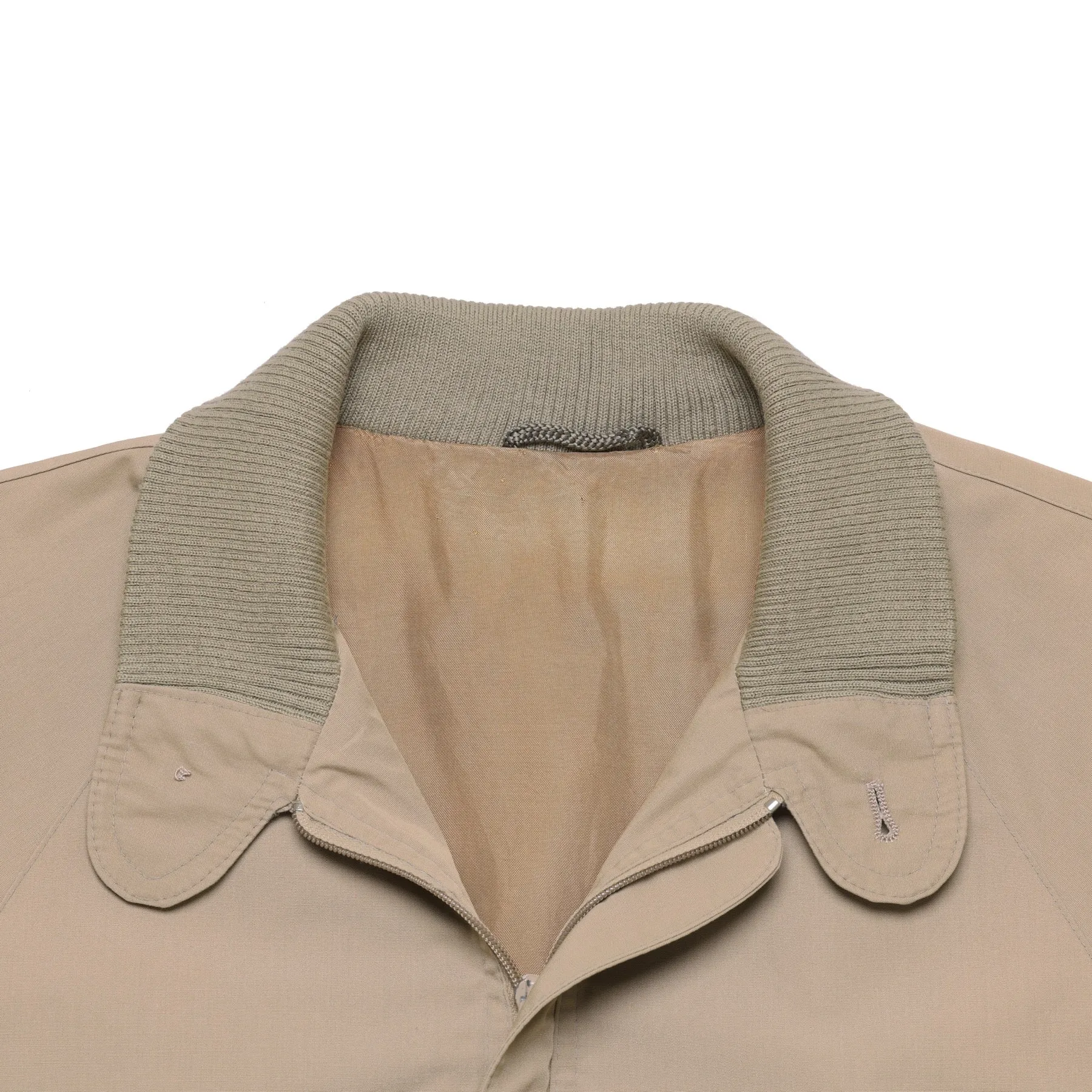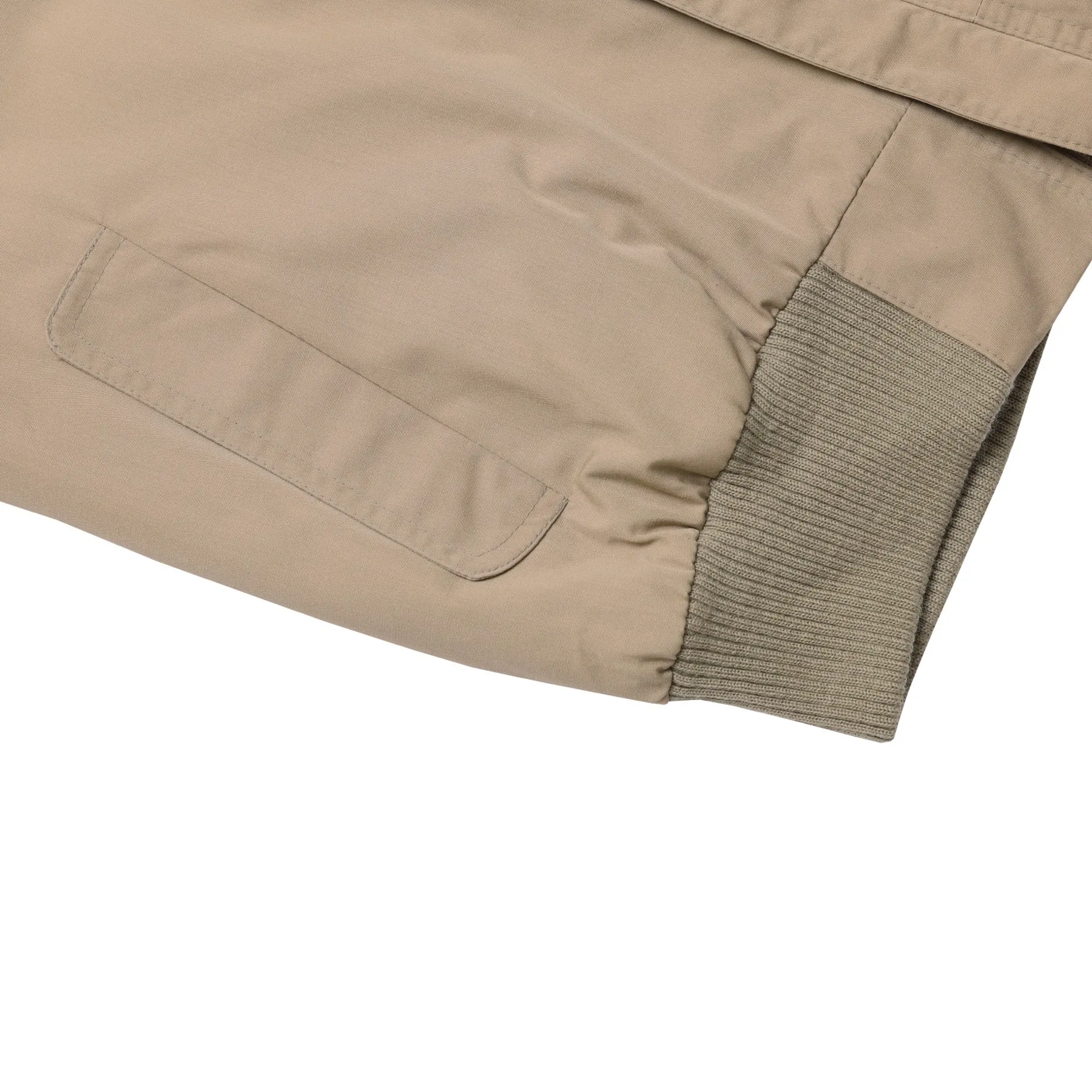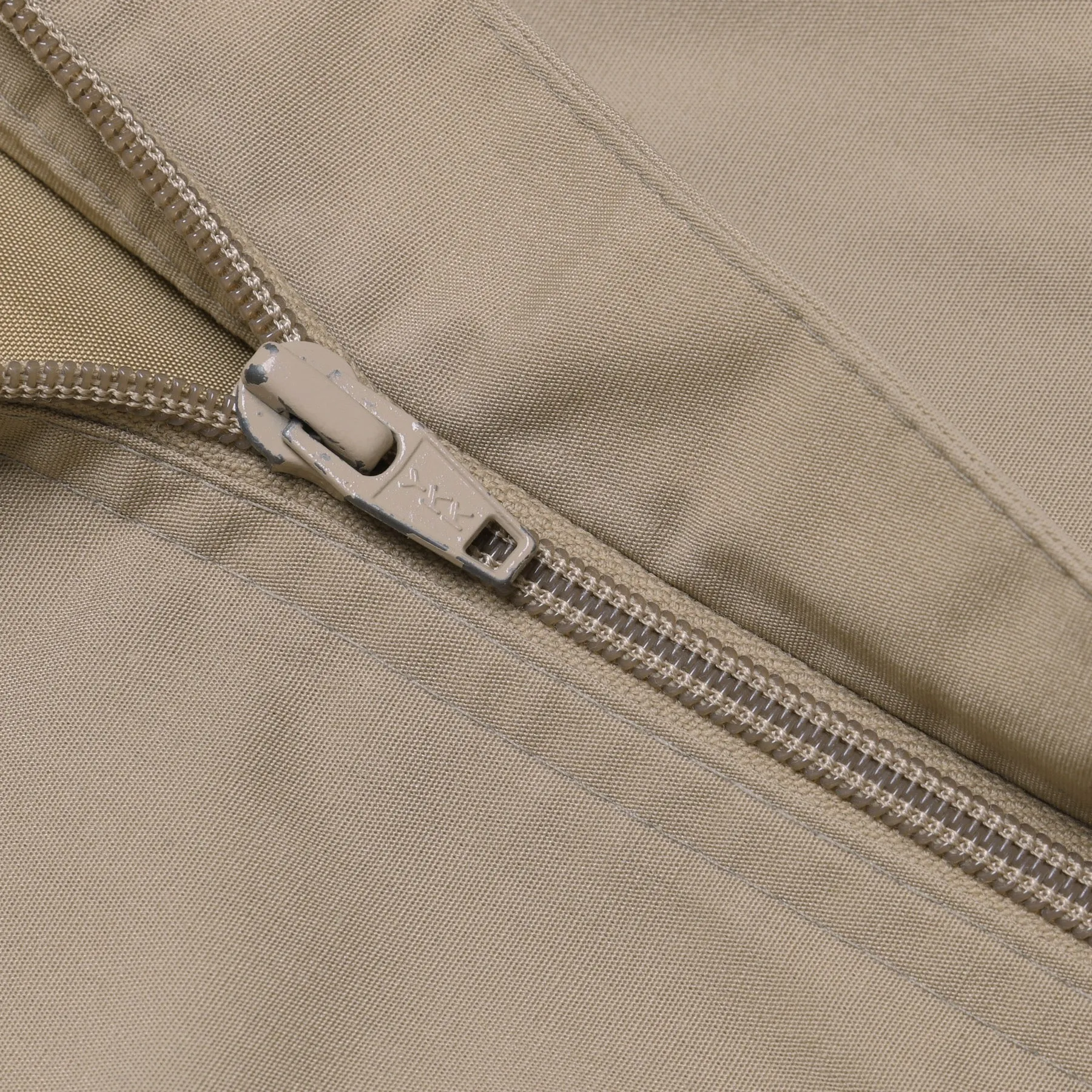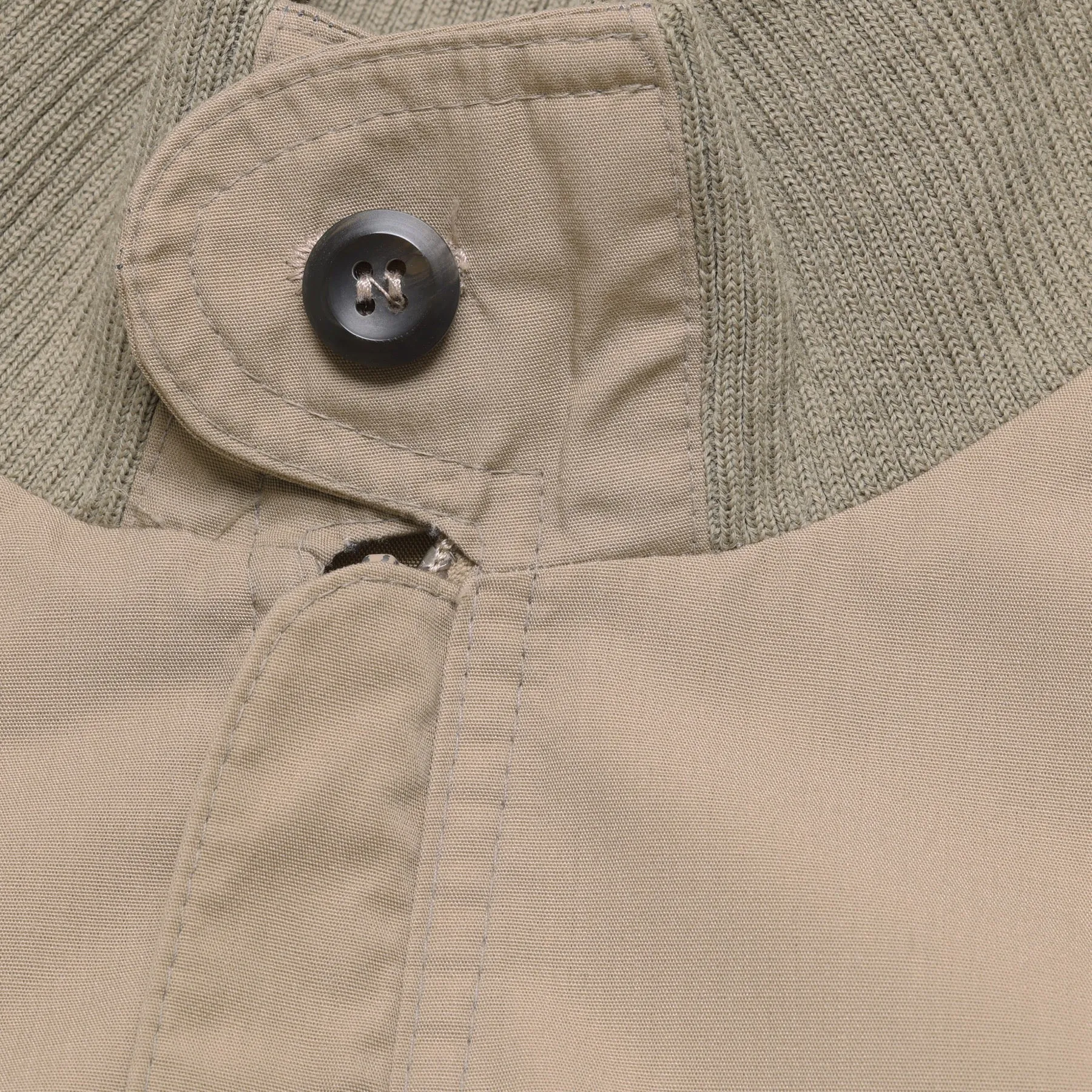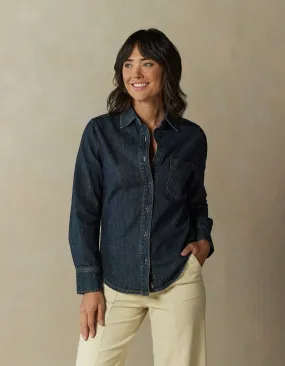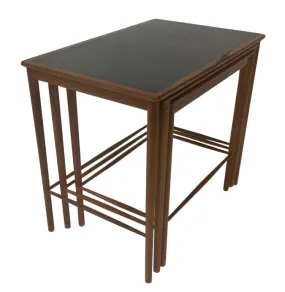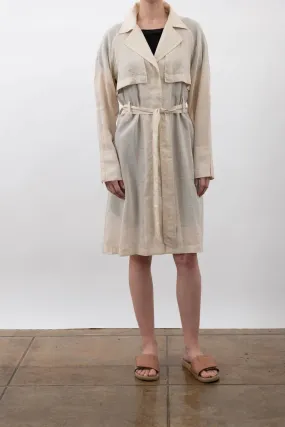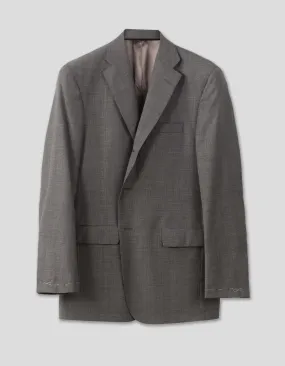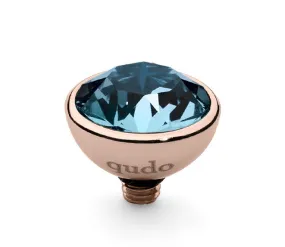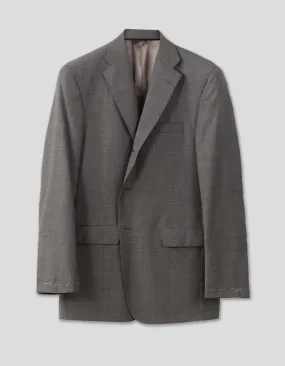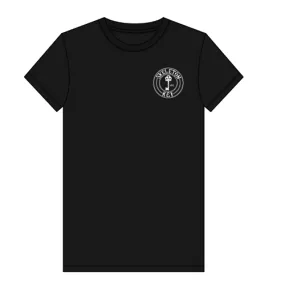Block-constructed raglan sleeves and relaxed blouson shaping optimize mobility and proportion without excessive tailoring intervention.
McAllan, almost certainly a Scandinavian casualwear brand originating in the late 1970s to early 1980s, most likely based in Finland, crafted garments aligned with the evolving European casualwear landscape. The McAllan label’s stylized white-on-black script logo embodies a distinctly Nordic or Northern Continental minimalism, diverging sharply from American collegiate fonts and British traditional typographies of the era. The jacket’s sewing methodology, YKK zipper hardware (which had expanded across Europe by the late 1970s), synthetic lining composition, and muted khaki shell collectively reinforce its Northern or Central European manufacturing identity, distinct from the casualwear standards then prevalent in the U.S., U.K., or Southern Europe. Within this historical frame, Finland, Sweden, and Germany witnessed a surge of mid-market menswear brands producing Harringtons, workwear jackets, and hybrid forms that domesticated American and British influences for European consumers. McAllan occupies a significant lineage within the postwar democratization of technical outerwear, echoing the spirit of British Harrington pioneers like Baracuta and early American sportswear labels. The absence of sizing or country-of-origin labels visible within the jacket suggests its confinement to domestic European markets, exempt from U.S. and U.K. export labeling requirements, thereby affirming its local market intent. The garment itself constitutes a men’s lightweight Harrington-inspired jacket—a bomber-blouson hybrid featuring a zip front, raglan sleeves, and ribbed knit cuffs and waistband—engineered for temperate climates where weather protection, casual mobility, and ergonomic comfort converge. The construction methodology showcases industrial lockstitching for structural seams, double-needle reinforcement at high-stress areas such as pockets, the placket, and shoulders, and a YKK-branded plastic coil zipper designed for smooth operation while resisting oxidation. Ribbed knit elements at the cuffs, waistband, and collar are overlocked internally and topstitched externally, anchoring stress points without compromising silhouette coherence. Precision technical detailing manifests through angled welt pockets with reinforced terminations, a self-fabric storm flap at the collar anchored by a button to mitigate wind ingress, and a concealed placket overlay that maintains the jacket’s clean visual integrity. The ribbed inserts are meticulously harmonized with the shell fabric’s tonal and textural language, sustaining both aesthetic and functional continuity. Historically, this jacket descends from a hybrid lineage: 1930s–1940s flight jackets and 1950s British Harringtons, reinterpreted by the 1970s–80s suburban, collegiate, and sports leisurewear markets as a cultural essential rather than purely functional outerwear. The fabric composition and textile engineering further reflect this hybridity: the shell is a medium-density, high-thread-count plain weave cotton or cotton-nylon blend (approximately 180–220 GSM), treated for slight water repellency, paired with a lightweight synthetic lining—likely polyester or acetate—designed for frictionless layering and minimal thermal resistance. The primary fabric’s weave structure is a high-density plain weave (tabby weave), characterized by a flat, uniform matte surface, devoid of twill’s diagonal ribbing. A subtle technical sheen suggests a mercerized cotton treatment or synthetic blend finishing, enhancing resilience and modest hydrophobic properties. Ribbed trims deploy a 1x1 rib knit construction, alternating knit and purl stitches to create an elastic, vertically corrugated structure crucial for flexible, durable garment entries and exits. The lining’s plain weave structure, executed in synthetic fibers, further optimizes mobility and surface slickness. The plain weave heritage aligns conceptually with heavyweight poplin (dense, with subtle weft-wise ribbing), etamine cotton (compact, wind-resistant weaves from military uniform history), simplified barathea (a tight, durable weave used for suiting), and early plainweave gabardine variants—despite gabardine’s later association primarily with twills. Comparatively, technical producers such as Olmetex and Limonta 1893 (Italy), British Millerain (UK), and Ventile® by STOTZ AG (originally UK-based) have historically excelled in tightly woven, weather-resistant cotton and cotton-blend textiles, situating McAllan’s fabric strategy within a broader European tradition of performance-infused casualwear fabrics. At the structural level, the jacket employs a raglan sleeve configuration, optimizing upper-body mobility while eliminating restrictive set-in sleeve seams. The body panels are generously cut, encouraging a relaxed blouson silhouette gathered into the ribbed waistband, balancing ease and proportion without excessive darting that would imply sharper tailoring. The garment is block-constructed from a relaxed-fit raglan-sleeve bomber base, incorporating a high yoke and generous sleeve heads, a configuration typical of casual jackets from the 1970s–80s. Two-piece raglan sleeves are carefully drafted with shaped underarm seams to contour anatomical movement without distorting the jacket’s visual cleanness. The collar construction is notably sophisticated: a ribbed inner stand collar offering soft neck contact is overlaid with a woven shell flap collar featuring a button closure, allowing functional versatility between open-casual and storm-guarded modes. The pocket design features cleanly set single-welt entry points at waist height, preserving the jacket’s minimal silhouette, while ribbed cuffs and hem are drafted as applied, slightly tapered panels that cinch the body’s lower perimeter for a blouson effect. Sewing and assembly techniques reflect mid-to-high-tier industrial production standards. Body and sleeve seams are constructed using plain seams, internally finished with three-thread overlock for both security and flexibility. The zipper is faced cleanly with narrow, evenly spaced topstitching, emphasizing both reinforcement and visual subtlety. Pocket bags are neatly anchored between front panels and facings, ensuring structural stability. Stitch density ranges between 8–9 stitches per inch (SPI), an ideal ratio for medium-weight cotton blends, providing strength without excessive rigidity. Topstitching at key stress points—zipper lines, collar edges, pocket mouths—is executed with remarkable uniformity, reinforcing areas of wear while avoiding visual clutter. Button attachments are hand-sewn post-assembly, enhancing mechanical durability without requiring visible bar-tacks. Internally, seam finishes are methodical: overlocking is clean with minimal thread waste, and the lining is bagged separately and affixed at hem and cuff points inside the rib panels, concealing internal structure while facilitating garment flow. Reinforcement techniques are carefully applied: pocket entries are stabilized with concealed fusible interfacing, zipper endpoints are bar-tacked for added tear resistance, and buttonholes are machine-stitched densely and symmetrically, resisting distortion under stress. The technical execution throughout the garment demonstrates a high level of production discipline. Symmetrical pocket placement, smooth sleeve drape, and precisely aligned collar construction attest to superior pattern control and sewing machine calibration. Material handling during construction maintains fabric integrity, avoiding seam puckering or grain distortion, a testament to both material familiarity and precise feed regulation. Industrial execution is distinguished not by hand-finished couture detailing but by meticulous adherence to best practices in durable, ergonomic casualwear assembly. Particularly notable is the complexity and precision of the hybrid collar assembly, which demands careful sequencing and alignment. Hardware choices align appropriately with the garment’s functional design language: the YKK plastic coil zipper offers smooth functionality and corrosion resistance, while the brushed-surface large-diameter button at the collar harmonizes tonally and texturally with the jacket’s muted khaki shell. From a conceptual perspective, the jacket operates on the psychological principle of streamlined masculinity tempered by casual adaptability. It conveys an atmosphere of preparedness without overt militarization, tailored for suburban and leisure-driven contexts where practical utility is integrated into everyday dress rather than fetishized. The muted khaki colorway reinforces visual discretion and stylistic flexibility. Artistically, the jacket roots itself in the postwar suburban leisurewear tradition—where practical sportswear forms were recoded into civilian casualwear staples. This lineage favors functional minimalism: clean lines, ergonomic paneling, and technical responsiveness over decorative excess, resonating with broader mid-century modern lifestyle aesthetics that prized utility and streamlined form. Material technologies (synthetic linings, YKK zippers) and stylistic elements (neutral color palette, subtle ribbed finishes, understated branding) anchor the jacket’s production firmly within the late 1970s to early 1980s. This historical placement aligns with the rise of casual suburban fashion’s preppy wave and the early globalization of functional casualwear aesthetics. Contemporarily, the jacket’s design vocabulary finds renewed relevance in neo-prep, casual heritage, and function-first streetwear movements. Brands such as A.P.C., Engineered Garments, and Beams Plus explore similar bomber-Harrington hybrids, recognizing their clean forms, ergonomic wearability, and understated nostalgic references. Within today’s fashion landscape, the McAllan jacket would occupy a niche defined by quiet functionalism and refined-casual modularity. In final evaluation, this jacket represents a well-balanced product of its era: technically sound, proportionally well-judged, and designed for enduring versatility. Its market viability today would thrive within curated vintage sectors, workwear boutiques, or as a foundation piece in capsule wardrobes that prioritize historical depth, functionality, and subtle adaptability.
Chest: 55
Length: 62
Shoulder: 46
Sleeve: 62
Size Conversion (approximate)
US Men’s Size: M-L
EU Men’s Size: 48-50
SKU: 015048




